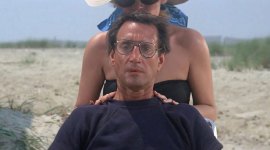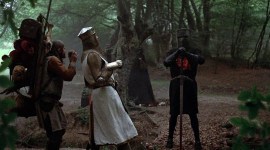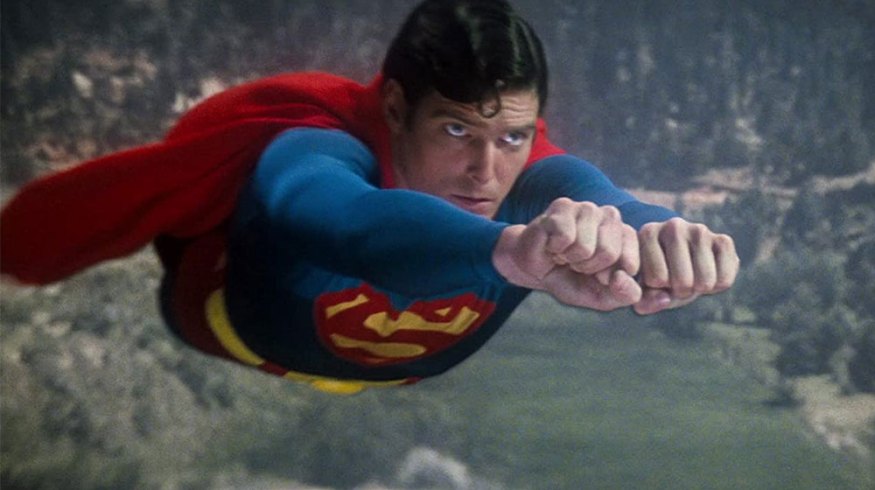
The Do’s and Don’ts of Writing a Tagline for Your Film or Video Project
Finishing your film or video project is always an accomplishment, but the work doesn’t stop there. Here’s how to write a tagline that will attract viewers.
A tagline is a short phrase marketers use to sell a product experience to a customer. They’re usually pithy or clever, often employing puns or other turns of phrase that can grab your attention and get you to start asking questions, like “What’s this . . . ?”
Some of the most famous include Nike’s short-and-sweet “Just do it” or Apple’s “Think different.” They condense the entire consumer experience with these two brands into a grand total of five words. It’s marketing witchcraft, and it works.
What Does a Tagline Do?
So, what does a tagline have to do with your film or video? Plenty. To begin with, let’s identify what a tagline isn’t.
In this post, we differentiated the logline from the tagline — the two often get confused, but they’re doing very different jobs. The load-bearing logline works in isolation, usually according to a formula, to quickly summarize your script for potential producers. It’s the elevator pitch that identifies exactly what your movie is about and why it will be interesting — if done correctly.

The tagline for Superman (1978) was “You’ll believe a man can fly.” It’s direct, it’s intriguing, and it’s a good example of how to capture the experience of the film. (Image via Warner Bros.)
The tagline, on the other hand, is one element of an overall marketing strategy to attract viewers for your movie. Loglines sell your film to producers; taglines sell it to audiences. They often capture one-liners from trailers in a joint effort to keep your movie front-and-center in a viewer’s mind. You’ll also see them on promotional posters, and they can appear in programming guides for film festivals. Now that marketing a movie is largely a digital affair, the tagline has taken on new roles, appearing as a social media post, as ad copy, or as a headline on a promotional website.
Unlike the logline, the tagline doesn’t follow a formula. Rather, a tagline is pure marketing savvy, and there are no rules — even if there are a few good ideas. First of all, it should be brief. We’ll look at a couple of longer ones in our case study below, and they can work, but not usually. Secondly, it needs to communicate the experience of your movie and not what your movie means or what it’s trying to do. Third, it needs to be clever — sometimes that means being very direct, and, again, we’ll look at some examples of this approach. But it shouldn’t be boring, it shouldn’t be overly descriptive, and it shouldn’t be trying to do too much. Finally, you need more than one of them.
Do You Really Need a Tagline?
Digital marketing based on behavioral data is creeping into every corner of our online experience, and your movie shouldn’t be an exception. It isn’t enough to just hammer out a tagline, plop it into all of your social media profiles, and then post it over and over. You need several that are each working toward a different goal, such as generating interest, offering more information, and then selling tickets (or copies, or downloads). Any tagline that tries to do all three at once is likely not to hit any of its marks, least of all all of them.
If, as Filmmaker Magazine asserts (linked above), four-quadrant movie marketing is dead, then that means we’re looking at target demographics with piles of overlapping characteristics, so know your audience, know how to speak to them, and then take your time with a multi-stage approach to snaring their interest and getting their eyes on your movie.
There’s no magic answer for how to write a tagline that accomplishes everything you want it to, but you can position yourself for success by following a couple of tips. First, write a lot of them. Bad ideas can yield good ones, so don’t be afraid to record every stupid thing that comes to mind until you nail it. Second, bring other brains into the process. You may have only your director’s or cinematographer’s view of the movie. Bring in other members from the crew — bring in outsiders you trust. Develop a hive-mind, and don’t be precious about your ideas. You never know who’s going to come up with the winner.
Let’s take a look at a few taglines — good and bad — to get your wheels turning
Case Study: 15 Taglines — Good and Bad
Many movies use more than one tagline in their marketing campaigns, including several in the list below, but let’s take a look at some specific taglines to see why they do and don’t work.
1. Fight Club

Brad Pitt and Edward Norton in Fight Club (image via 20th Century Fox).
Mischief. Mayhem. Soap.
Like loglines, taglines can work well when you group unlikely elements into a shared phrase or expression. Things that stand out snare our attention — this is the principle behind the “hook,” which is a narrative device that grabs your attention sufficiently just by being interesting — interesting enough that you stick around for the rest of the message — or the rest of the book, or the rest of the movie.
Unlikely groupings of dissimilar things, especially when you can catch your audience off guard, create hooks because we tend to favor things that make sense — we like explanations, even if we have to find them ourselves. 1999’s Fight Club was what we might call a disruptive success. Many viewers hadn’t seen anything like it before, and plenty weren’t even sure what they were going to see when they went to the theater (I thought it was just a movie about boxing). But as the tagline demonstrates, the marketing behind this movie did its job, and viewers wanted explanations for why they were intrigued.
“Mischief” and “mayhem” are interesting enough, but what in the world do they have to do with “soap?” This tagline isn’t even a full sentence, and it’s one of my favorite examples of a tagline done right. Three words. Three statements. Three things that don’t belong together.

The tagline for Fight Club as both a narrative hook and a visual one — a bar of soap from the tagline bearing the title. (Image via 20th Century Fox.)
The film still resonates 21 years later, and if you haven’t seen it, you’ll still find yourself wondering what a bar of soap bearing the title has to do with Brad Pitt and Edward Norton.
2. The Fly
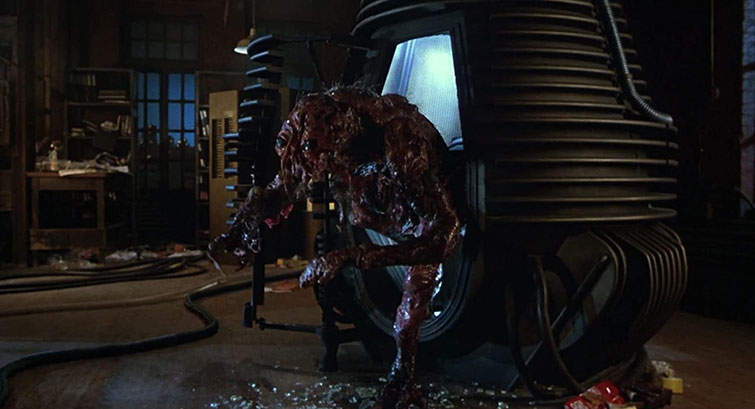
The Fly (image via 20th Century Fox).
Be afraid. Be very afraid.
David Cronenberg‘s 1986 body horror remake was a smash, and it brought the controversial director into the limelight. It is a graphic, disturbing film that many saw as a powerful metaphor for the AIDS crisis at the time. The tagline is so direct, so commanding, that it has entered common parlance as a phrase unto itself. (Google the phrase, and one of the first results you’ll get is people wondering where the line comes from.) There isn’t anything particularly interesting or hookish in this tagline; rather, it groups bugs, fear, and Jeff Goldblum — and it doesn’t leave much room for negotiation.
Giving your audience a directive, especially one like “be afraid,” which taps into that part of the psyche that likes body horror and haunted houses during Halloween, is a good way to snare interest. It’s much like “Don’t press this button.” We’re inclined to resist the directive and do what we shouldn’t — like not being afraid to go and watch The Fly.
3. Jaws: The Revenge
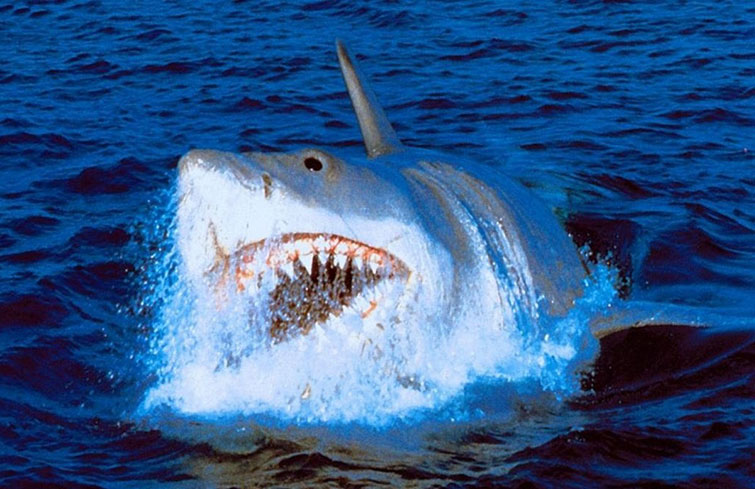
Jaws: The Revenge famously coined “This time, it’s personal” in the tagline for this disappointing installment of the franchise. (Image via Universal Pictures.)
This Time It’s Personal.
This famous franchise flop is our first example of what not to do. The film was widely panned, particularly for the exceptionally fake-looking shark. Marty McFly famously takes a swipe at the horrible shark when he comments on the holofilm trailer for Jaws 19 at the Holomax Theater in Back to the Future Part II: “Shark still looks fake.”
The problem isn’t the tagline itself, which is another example of a marketing phrase that cemented itself in common usage — you’ve heard the line in plenty of spoofs and lampoons. The problem, as we established earlier, is that taglines don’t work in isolation. This tagline could apply to any number of revenge films and do just fine. However, paired with a title like Jaws: The Revenge and promotional shark graphics, we aren’t sure who’s getting personal here: the shark or some unnamed and un-promoted human characters in the film who, presumably, have beef with this shark. Again.
The tagline must work with the poster must work with the title must work with the film. Make a good film first — that should be step one. Then work backward to develop branding, imaging, and marketing that unambiguously tell your audience what they’re in for — and why they shouldn’t miss out.
4. The Blair Witch Project

Branding their horror film as entirely real found footage paid dividends for the filmmakers behind 1999’s The Blair Witch Project. (Image via Artisan Entertainment.)
In October of 1994 three student filmmakers disappeared in the woods near Burkittsville, Maryland, while shooting a documentary…A year later their footage was found.
Another disruptive success from 1999, The Blair Witch Project managed to push their marketing beyond the taglines (yes, plural, another of their hits was “Everything you’ve heard is true”). For a hot minute, plenty of people thought the story was true. After all, the tagline intones a “documentary,” and it says “their footage was found.” That makes it real, right? Add to this that the promotional marketing material surrounding the midnight premiere at the Sundance Film Festival listed the actors as “missing” or “deceased.”
Viewers were attracted in droves to this real-life supernatural horror film, which initiated a revival of the found-footage filmmaking technique. The budget for this independent film was small compared to industry standards, so the filmmakers had to get creative with how they would attract attention. So they lied. All’s fair in love and filmmaking, so if your movie is grounded in the “real,” get creative with the hints you can drop in your tagline to draw people into the appeal of “based on a true story.”
5. The Lord of the Rings: The Fellowship of the Ring

Peter Jackson kicked off his landmark trilogy with The Fellowship of the Ring, and the film’s taglines reflect the power he tapped into bringing Tolkien’s masterpiece to the screen. (Image via New Line Cinema.)
One ring to rule them all.
Peter Jackson’s epic Lord of the Rings trilogy kicked off in 2001 with The Fellowship of the Ring, and it took over the cinema world with its sweeping vistas, its stellar ensemble cast, and its stunning visual effects. The scope and ambition behind this trilogy doesn’t have many parallels. The marketing team faced a monumental task: how to do justice to Tolkien‘s legacy and the juggernaut of a film they were about to unleash on the world.
As savvy film marketers, they used several taglines, including “The legend comes to life,” “Middle Earth comes alive,” and “Power can be held in the smallest of things” — among others. Applied to the standard teasers, trailers, and BTS tricks, these taglines cross-pollinated all the marketing messages from the trailers, posters, and other taglines.
What’s particularly effective, and appropriate, about the main tagline here, is that the marketing team didn’t do anything. The line comes from Tolkien’s famous poem inscribed on the One Ring. It intones the full threat of this greatest of adversaries and connotes the heavy price the forces of good will have to pay to defeat it — and its malevolent creator. The marketing team simply plucked this auspicious line from the text and gave it its due as a short-and-sweet tagline that brought all the horsepower of Tolkien’s famous epic to bear.
The lesson here is simple: don’t reinvent the wheel. If your movie project is somehow aligned with a topic, a figure, or a theme with a great deal of pre-existing recognition, lean on that.
6. I Was a Teenage Werewolf

Michael Landon and Dawn Richard in I Was a Teenage Werewolf. (Image via American International Pictures.)
The most amazing motion picture of our time!
1957’s I Was a Teenage Werewolf was a financial success, and it helped launch Michael Landon‘s career, despite mixed reviews of the feature itself. It was among the most successful of American International’s releases. All of this despite its tagline.
To be fair, the marketing here is directed largely at drive-in theater-going teens in the late ’50s, so exaggeration and bold claims were the name of the game — drive-ins notoriously being full of . . . distractions. So while it worked under these circumstances, it’s another example of what not to do, and you’ll see it called out on several “worst taglines” lists.
The problem is simple. The claim is so audacious, there’s no reason to respond to it. There are no insights regarding the genre, there are no plot details that this tagline can point back to, and for all its pomp and circumstance, there’s nothing memorable about this line.
Don’t make claims — describe experiences. Say something interesting. Use your taglines to make people stop scrolling and wonder what you’re talking about.
7. The Matrix
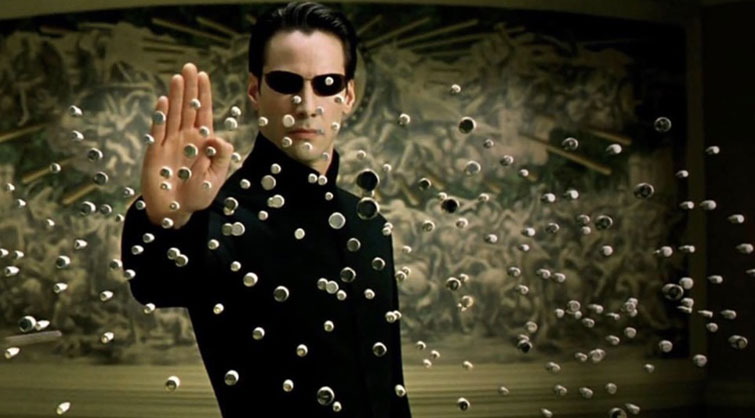
Keanu Reeves in The Matrix. (Image via Warner Bros.)
What is The Matrix?
As if 1999 hadn’t already given this list enough with Fight Club and The Blair Witch Project, The Matrix is another disruptive game changer with a marketing angle we need to look at. From the beautiful use of bullet time to bending spoons to lifting the veil on our seemingly flawed reality, The Matrix created an impact crater, and ideas and phrases from this movie are all over common parlance.
The Matrix had several taglines, including other gems like “The matrix has you” and “Welcome to the real world,” but the simple question “What is The Matrix?” is the standout here. There was a lot of mystery about this movie and what we could expect from it, and that seems to have been intentional. Rather than try to draw us in with allusions to kung fu, Westerns, and phenomenology, the marketing team behind The Matrix decided to keep you in the dark — and you wanted to be there.
In theory circles, we call this the hermeneutic code, but all it really means is that the marketers introduced a mystery you can’t possibly solve — not without the rest of the movie. It’s one of the primary techniques for building and maintaining momentum in a storyline. In this case, a very brief storyline — a tagline, in fact.
Don’t be afraid to bring some mystery into your tagline. Give your viewer a reason to want more information.
8. Star Trek

Chris Pine and Zachary Quinto in 2009’s Star Trek. (Image via Paramount Pictures.)
The future begins.
2009’s Star Trek faced a bit of an uphill battle. Sure, news about the casting got around fast, and J.J. Abrams already had a reputation that was strong enough to draw viewers in, but the advantage is also the problem. It’s STAR TREK. New Star Trek. It’s hard enough navigating the minefields of Trek fandom on a normal day. Reboot the original series and create the Kelvin timeline? That’s just asking the critical fanbase to raise their shields.
So, the marketing team decided to bank on the cache of the franchise and rather than choreograph some tagline gymnastics to prove to viewers that this Star Trek was worth every bit as much attention as any of the other Star Treks, they took control of the narrative with the simple tagline “The future begins.” It’s a re-creation, an origin story. It’s a divergence from the “prime timeline,” but it shares common elements about how the intrepid crew came together — this time with better visual effects.
When you’re faced with branding challenges related to common perception of your subject matter, don’t swim upstream. Find a subtle way to go with the flow, and let that common perception do some of the heavy lifting for you.
9. Avengers Endgame

There was already considerable marketing momentum behind the Avengers franchise before Endgame tapped into the appeal of an epic conclusion. (Image via Walt Disney Studios.)
Nothing can prepare you for the end.
Another in the category of “franchises with some brand recognition,” Avengers: Endgame was one of the highest-grossing films of all time. It was the 22nd film in the Marvel Cinematic Universe, so it’s an understatement to say the marketing team had some momentum going into their push for the film. As the capstone for so many storylines across such a long period of time, this particular movie was positioned to be a hit.
But that doesn’t mean you don’t market a hit. As the end of the franchise and the end of this particular storyline, there’s a bit of duality to “the end” in this tagline. The claim here is almost as audacious as the tagline for I Was a Teenage Werewolf, but it comes across more as a dare — a challenge.
While you may not be writing taglines for franchises as big as The Avengers, you can still swipe this from their playbook. Address your audience directly, and challenge them to call your bluff.
10. Black Panther

The tagline for Black Panther used the marketability of the Avengers franchise as a springboard into an even more exciting installment. (Image via Walt Disney Studios.)
The Avengers have a new king.
The highest-grossing single superhero film of all time, Black Panther (and its marketing efforts) is worth a moment of our time. Hollywood had been talking about Black Panther since the early ’90s, but it took a minute to actually come together. Once it did, its performance at the box office was stratospheric. And for good measure — an epic rise-to-power storyline, beautiful visuals, stellar casting, and high-stakes action and adventure make this film a case study in and of itself on How to Make an Awesome Movie Everyone Loves.
As we saw above with Avengers: Endgame, Black Panther had an ace up its sleeve — it had the power and momentum of the Avengers timeline behind its pre-release buzz and marketing efforts. Even so, a number of taglines hedged the marketing bets to make sure the film was taking full advantage of this cache; however, probably the most elegant tagline in the lineup — and the one to take fullest advantage of Avengers bump — is the one we’re looking at here. “The Avengers have a new king” takes the marketing power of the franchise and dials it up with a king. What’s better than the Avengers? An Avengers king, that’s what.
When you’ve dialed into a cluster of taglines that work for your various marketing and social campaigns, keep thinking about how you can take the best of them and push it that extra bit to really show your audience what they’re in for.
11: Suspiria

Dario Argento’s giallo horror classic Suspiria was an international success despite its taglines. (Image via International Classics.)
The Only Thing More Terrifying Than The Last 12 Minutes Of This Film Are The First 92.
Suspiria is about as Argento as his movies come — it’s decidedly one of his most memorable films, with a signature style and over-the-top approach that manages to fall somewhere between “Are you serious?” and “Man, this is great.” Financially, the film was an international success, and it spurred two more movies in The Three Mothers trilogy.
But one (two, actually) of its taglines was ungreat. The various international marketing efforts relied on a grab bag of taglines, some of which tapped into Argento’s popularity — others got creative with intonations of witchcraft and vague threats about the dark.
This tagline, however, just gets in its own way. The only salient points it offers are numbers — chunks of the overall runtime that, frankly, don’t do anything to grab a viewer’s attention. Who cares how long it is? And the specificity of the final 12 minutes? What about them? All we’re getting here is that this scary film has a scary ending. Dullsville.
If that weren’t enough, in the U.S. the tagline read “The Only Thing More Terrifying Than The Last 12 Minutes Of This Film. Are The First 80.” because the original American prints were trimmed so the film could get an R rating.
The lesson here is that you can’t simply say your [insert genre here] film is very [same genre]. It’s uninteresting, it isn’t challenging, and it doesn’t draw the viewer in.
12. Close Encounters of the Third Kind
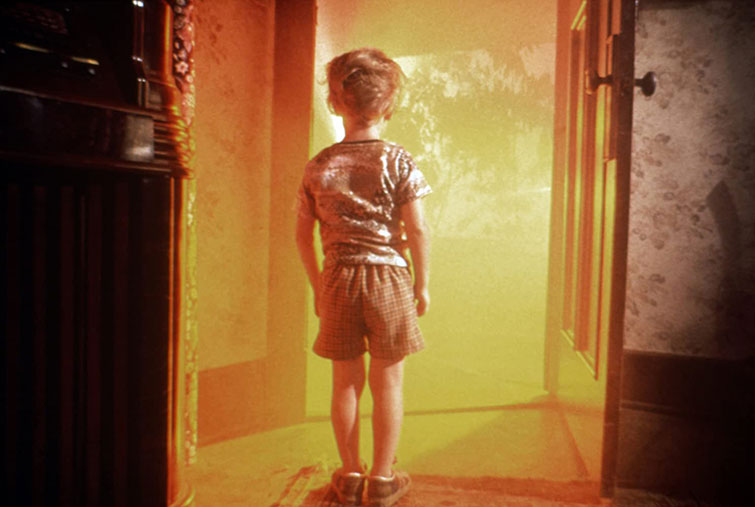
Close Encounters of the Third Kind is a great example of a tagline that iterates upon itself for a marketing approach that adjusts as it goes. (Image via Columbia Pictures.)
Close Encounter of the First Kind — Sighting of a UFO. Close Encounter of the Second Kind — Physical Evidence. Close Encounter of the Third Kind — Contact. WE ARE NOT ALONE.
Steven Spielberg’s passion project Close Encounters of the Third Kind was such a critical and financial success that the Library of Congress selected it for preservation in the National Film Registry for being “culturally, historically, or aesthetically significant.” The film debuted in limited release, before expanding into wide release and then returning to the theater years later in an expanded (and controversial) “special edition.” (A third version, the director’s cut, righted the wrongs Spielberg didn’t care for in the special edition.)
So, we can safely say this film is significant.
The various iterations of the film itself reflect what’s important about the taglines — iteration. As I mentioned previously, it’s important to monitor your tagline campaign (indeed, your overall marketing campaign) in a digital world where you’re appealing to different demographics at different stages of the conversion funnel. (Bring that up at your next dinner party!) You don’t market to someone who is just about to finally pay for a download the same way you market to someone who is only just now hearing about your movie.
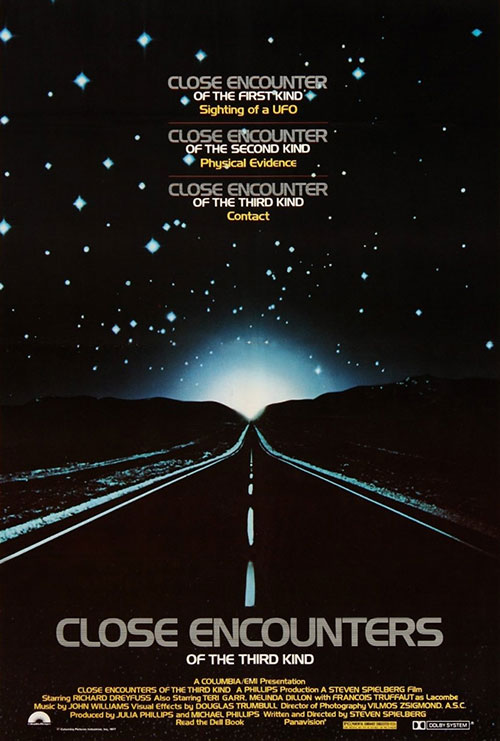
The tagline for Close Encounters of the Third Kind at work. Later iterations reduced the tagline simply to “We are not alone.” (Image via Columbia Pictures.)
In this instance, the first tagline (quoted above) is the longest. It starts out with J. Allen Hynek‘s classifications of “close encounters” — arguably a sluggish way to snare attention. The classifications are crucial to the experience of the film, and to the title, so they needed some legwork to earn their role in the marketing campaign. The tagline relies almost entirely on the hook of meeting an alien, which, clearly, was enough to create a success.
However, a later iteration, once potential viewers became familiar with the tagline and the classification system necessary to the film’s experience sent the same, loaded message with the now-shorter tagline of “We are not alone.” The early legwork paid off as a shorter tagline further down that funnel.
This step-by-step process is a good demonstration of how you can build upon interest in your film as you go. Nail it with a solid hook (like aliens), and your movie might end up in the National Film Registry as well.
13. Minions
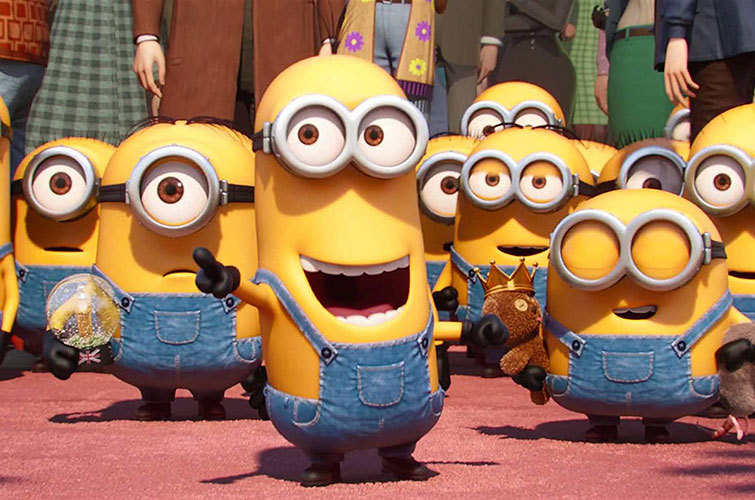
The beauty of the tagline for Minions is its simplicity. (Image via Universal Pictures.)
Uh oh.
Fresh off our look at the rather-lengthy Close Encounters tagline, we can’t not look at this tiny tagline for the Despicable Me prequel that earned over a billion dollars. Like some of the other films in this list, Minions hit the marketing game running with momentum from a pre-existing franchise. Capturing hearts and minds with this one should be simple. We already know these little guys are funny, and they cause hijinx. There is no better summation of this film experience than “Uh oh.” Anything longer would just have been wasting words.
If brevity is the soul of wit, and your tagline is going to be witty, then, well, you get it. Say as much as possible with as few words as possible.
14: Poltergeist

Another short-but-sweet tagline, the marketing copy for Poltergeist relies on a one-two punch from the trailer and the tagline. (Image via Metro-Goldwyn-Mayer.)
They’re here.
Originally a dark horror sequel to Close Encounters of the Third Kind, Poltergeist went on to become one of 1982’s biggest commercial and critical successes. With a cult following firmly entrenched, Poltergeist remains one of the most famous horror franchises. It’s tagline strategy is a great example of how the elements of film marketing can be self-referential and work together to build an audience, rather than working in isolation to attract viewers.
The primary tagline, “They’re here,” obviously has the strengths of brevity and intrigue. Who’s they? Don’t I need to know more in this situation? But its strength lies not in its length; rather, this is a line directly from the movie — arguably one of the most famous lines in horror history — and it featured prominently in the trailer. By intoning it on movie posters and other promotional items, the tagline summoned the creepy trailer immediately to mind, doing the work of the trailer where the trailer couldn’t. Another line from the movie “Mommy, Daddy, where are you?” also did double-duty as a tagline, indicating the marketing team’s awareness of the power of their source material.
If there’s an element as resonant as “They’re here” in your movie that both identifies the genre and describes the movie-watching experience, don’t be afraid to add direct quotations to your bank of taglines — as long as they’re short and to the point.
15: The Goonies
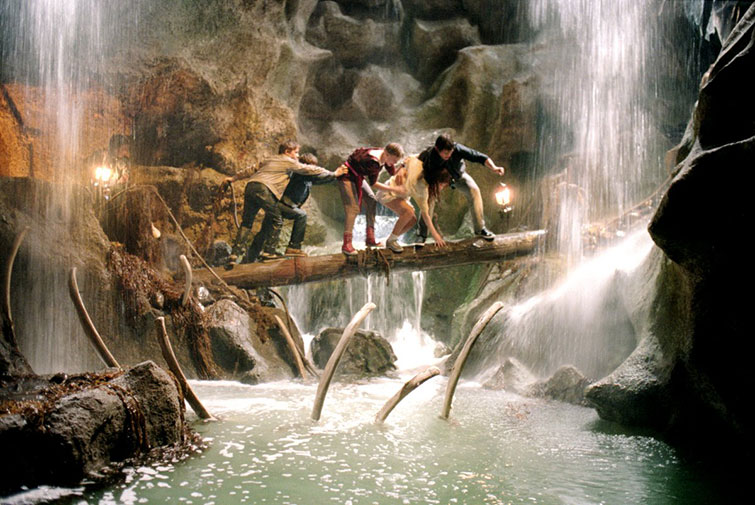
A little on the long side, the tagline for Spielberg’s beloved 1985 family adventure The Goonies latches on to the idea of the hook and really goes for it with as many as it can get away with. (Image via Warner Bros.)
The pirate’s map, The villainous crooks, The underground caverns, The booby traps, the skeletons, The monster, the lost treasure, and the magic that is . . . THE GOONIES.
As if Steven Spielberg hasn’t made enough appearances on this list already, we need to look at one more: The Goonies. Another entry into the National Film Registry for being “culturally, historically, or aesthetically significant,” The Goonies has also become a cult film, especially among the kids who comprised the tail end of Gen X. The film offers a little something for everyone, even if its target audience was young — this is noteworthy because it broadens the moviegoing audience to include entire families. Some of the humor hasn’t aged well, but this is still a film that children and adults can watch together.
To that end, the marketing needed to be similarly all-purpose. Being too direct, or too clever, or too challenging all could have torpedoed the marketing efforts, so instead, the tagline for The Goonies takes the concept of the hook and runs with it. The tagline really is just a series of hooks, each more aggressive than the one before it. It’s pure marketing — it’s grabbing your attention over and over and leaving you with a vague-but-enticing impression of the moviegoing experience: adventure. When a more nuanced tagline strategy can get in the way of movie project that really just does one thing and does it well, then don’t be afraid to sell your viewer on the experience directly.
So there you have it: 15 different approaches to the tagline to demonstrate what you should — and shouldn’t — do with your own taglines. There are any number of creative approaches you can take to create an effective tagline, and the end result should vary based on the intended use: festival programming, social media posting, advertising. Remember to write several, and to write them with others. Collaboration is one of the best ways to get out of your own head and think about your movie from someone else’s perspective.
Cover image via Warner Bros.





